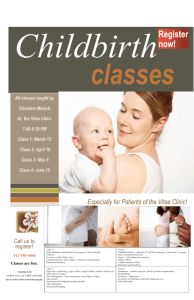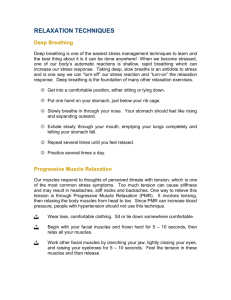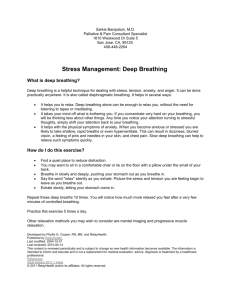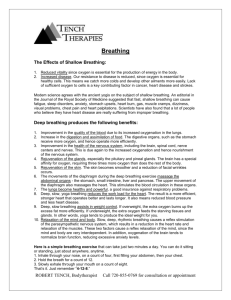Creating skills for the future
advertisement
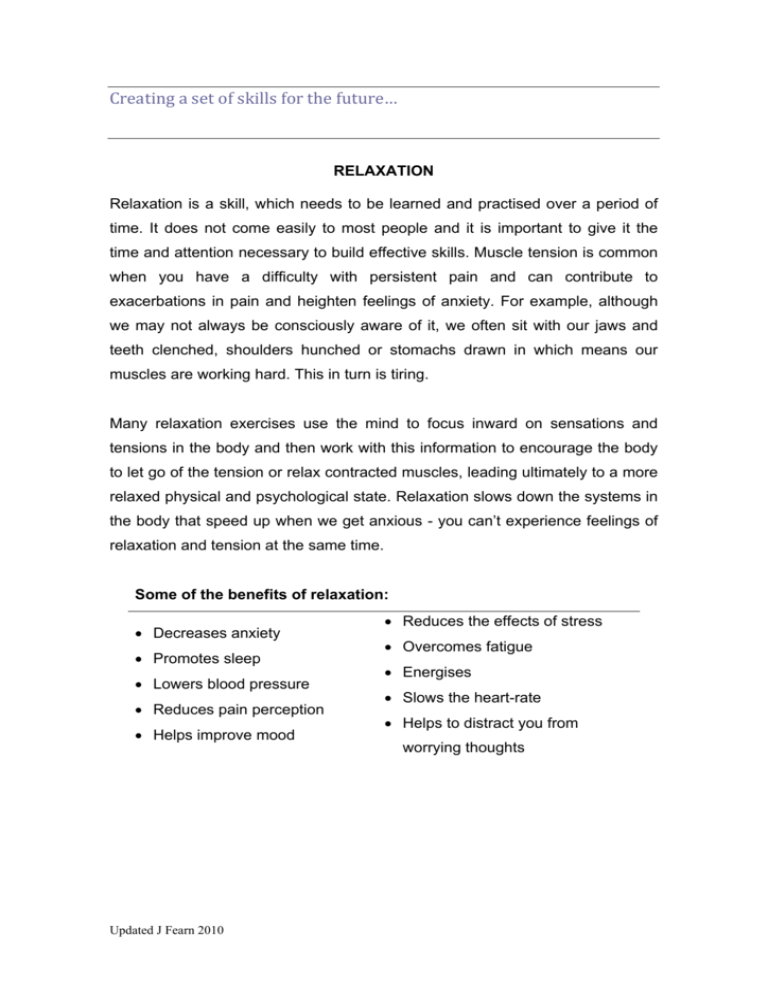
Creatingasetofskillsforthefuture… RELAXATION Relaxation is a skill, which needs to be learned and practised over a period of time. It does not come easily to most people and it is important to give it the time and attention necessary to build effective skills. Muscle tension is common when you have a difficulty with persistent pain and can contribute to exacerbations in pain and heighten feelings of anxiety. For example, although we may not always be consciously aware of it, we often sit with our jaws and teeth clenched, shoulders hunched or stomachs drawn in which means our muscles are working hard. This in turn is tiring. Many relaxation exercises use the mind to focus inward on sensations and tensions in the body and then work with this information to encourage the body to let go of the tension or relax contracted muscles, leading ultimately to a more relaxed physical and psychological state. Relaxation slows down the systems in the body that speed up when we get anxious - you can’t experience feelings of relaxation and tension at the same time. Some of the benefits of relaxation: Decreases anxiety Promotes sleep Lowers blood pressure Reduces pain perception Helps improve mood Updated J Fearn 2010 Reduces the effects of stress Overcomes fatigue Energises Slows the heart-rate Helps to distract you from worrying thoughts BREATHING FOR RELAXATION Why breathing is good for your body Oxygen is a nutrient, which is carried in the blood and is necessary for metabolism in healthy tissues. Internal organs and muscles need a daily amount of oxygen to survive and a great deal more to heal. When we get the maximum amount of oxygen our body can work at peak capacity, but extended periods of shallow breathing can result in poor concentration, headaches and sleep problems. Improving your breathing can help you sleep more soundly and increase your energy and stamina Why deep breathing is good for your mind Breathing affects how you think and feel too. Anger and anxiety makes us take short, quick breaths, whilst relief makes us sigh. So if we learn to control our breathing, we can learn to have more control over our emotions. Knowing you can control how you feel also helps to increase your self-confidence. DIAPHRAGMATIC BREATHING The method of breathing described here is to help your breathing pattern and is a simple relaxation technique. It is called diaphragmatic breathing and makes full use of the diaphragm - a sheaf of muscle between your lungs and your stomach. A useful way of practicing it is to make it part of your daily routine: Start by getting yourself into suitable position e.g. sitting, lying down, standing, leaning against something for support Place your hands on your chest and your stomach Focus your attention on your breathing, noticing your breath going in through your nose and out through your mouth Relax your shoulders on the breath out Notice the hand on your stomach rising and falling and the hand on your upper chest remains still Repeat a few times to get the hang of it Practice for up to 5 minutes daily to become more skilled at using it in more challenging and unpleasant situations Updated J Fearn 2010 GENERAL GUIDELINES FOR GETTING STARTED WITH RELAXATION 1. Choose a time of day when you know that you will not be disturbed and practice in a room on your own. 2. Loosen any tight clothing & go to the toilet before you start to practise the exercises. 3. Make sure that the room is as quiet as possible. 4. Lie or sit on the bed, or in a chair with your legs uncrossed and your arms lying comfortably by your side or in your lap. Move about as much as you want before and during relaxation 5. After the relaxation, just rest for a few minutes and enjoy the feeling before you get up and engage in activity. You should allow some time to return to full alertness before driving or operating any equipment. Updated J Fearn 2010


